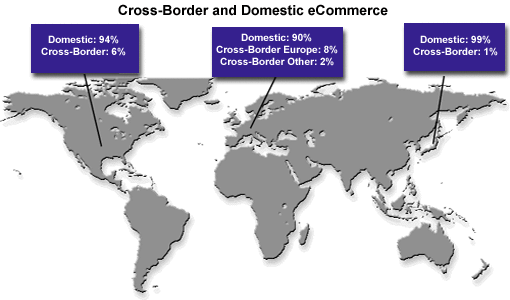Online Retail Payments in Cross-Border E-Commerce
Abstract
Cross-border C2B e-commerce accounts for 6% of total online sales in the US, 10% in Western Europe, and less than 1% in Japan. Celent urges US merchants and their payment services providers to broaden the payment methods made available to foreign shoppers in order to increase cross-border sales.
In a new report, "Online Retail Payments in Cross-Border E-Commerce,"Celent analyzes the state of payment acceptance in a cross-border e-commerce context.
Payments are still a major liability in US merchants’ decisions to conduct cross-border sales. According to the report, US payment services providers will have to expand beyond plastic to trigger cross-border sales. In the process, they will be challenged to adapt their card-centric business models to a non-card environment.

Cross-border sales account for an important share of US online merchants’ sales, up to 20% of total sales in some cases. The development of local web sites does not make supporting cross-border sales less important. Meanwhile, cross-border e-commerce still faces significant barriers, particularly with payments. In addition to supporting better fraud management, US payment services providers should encourage merchants to expand the payment options available to foreign shoppers. The first step in that direction should be to accept foreign ACH credit and debit payments, which are popular overseas.
"Put in perspective, the question of ACH acceptance in cross-border e-commerce is very representative of the more general issues facing the US payment industry" comments Gwenn Bézard, Celent Senior Analyst and author of the report. Cross-border e-commerce payments issues relate to broader challenges in the US payment industry such as the need for more flexible payment methods online, the pressure on payment services providers to make distinct payment systems converge, the need for integration of domestic ACH payment systems worldwide, and the need for the US payment industry to take foreign markets into account.

